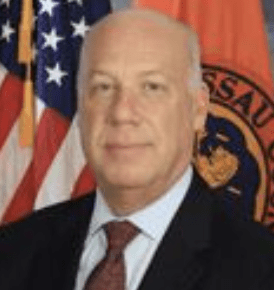The finances of Nassau Health Care Corporation – the public benefit corporation that operates Nassau University Medical Center and the A. Holly Patterson Extended Care Facility – are in desperate need of emergency resuscitation.
We reached this fiscal cliff after years of funding infusions from New York State. These resources were never intended to be a permanent source of revenue, but to serve as a temporary bridge to facilitate the rightsizing of the hospital’s operations. Unfortunately, year after year, this money has not met its intended goals.
Seeking answers about growing operational losses and a clear, on-the-record plan for NUMC’s long-term stability, I called for public hearings on March 31 and June 7, 2023. On July 24, I joined a meeting called by CSEA Local 830, which was attended by other elected officials and some members of the former NUMC Forward task force, for discussions that included my proposal for creating a more symbiotic Nassau Health Care Corporation.
Components of my plan entail transferring A. Holly Patterson to the NUMC campus and developing the surrounding property to integrate rehabilitation and assisted living communities, thereby connecting residents to the Hospital’s crucial clinical practices and addressing the under-utilization of NUMC’s campus. Former CEO and Medical Director Dr. Anthony Boutin said the plan had merit and could play a role in sustaining the hospital into the future. Thereafter, I reiterated my request for a hearing on Dec. 18 in the interest of obtaining an update on the hospital’s financial status and its short- and long-term viability plans.
In late February 2024, a report by the accounting firm Alvarez & Marshal projected that NuHealth could be out of cash by the end of April. This dire posture marks the culmination of years of staggering – and growing – operating losses that reached $164 million in 2022, climbed to $180 million in the following year, and continue to fuel the threat of NuHealth’s closure.
Despite these annual losses, the chairman is holding board meetings only quarterly, which violates the Nassau County Charter’s requirement for six meetings per year. Leadership did not adequately plan for the scheduled conclusion of the state’s Delivery System Reform Incentive Payment (DSRIP) program, and last year failed to apply for their share of millions in state aid for distressed hospitals. Cronyism and political patronage continue unabated — a fact made evident by the recent hiring of an embattled former sheriff at $275,000 annually.
In recent weeks, the state has once again taken action to sustain this hospital by offering $83 million in additional resources, but this time, the money comes with a series of conditions to address a “lack of strong leadership, transparency, communication, and fiscal strategy.” These include submission of a five-year transformation plan, a quality improvement plan, and breakdowns of salary and lobbying costs; an immediate search for a new CEO; outside oversight of management hires and appointments; and outside approval for contracts and payments over $10 million.
As a former deputy director and executive director of public corporations whose career has involved turning around housing authorities considered to be troubled, I have interacted with oversight agencies to improve performance and implement best practices like those being proposed. The requirements are eminently reasonable for an institution that has received numerous tranches of short-term funding from the state. If they are going to be bailed out yet again, such resources should be tied to certain benchmarks.
The chairman’s refusal of the offer was shortsighted, and his response further illustrates how his leadership has been a central problem. Cognizant of the far-reaching repercussions, I hope Nassau County Executive Blakeman will take this as an opportunity to evolve on this issue.
Should conditions further worsen, the state would be empowered to install a receiver to operate the hospital – an outcome that would not be optimal for county residents. The best path forward is one in which a turnaround plan is implemented by an effective leadership team formed of local community leaders who are directly accountable to those they serve.
Bold, collaborative action – including the complete and full funding of Medicaid reimbursement rates for hospitals and nursing homes by the state – is needed to rescue these safety-net facilities and sustain them for the long-term benefit of our region. We owe this to the families who rely upon them for essential care and the more than 3,500 employees who work so diligently at these facilities to deliver top-level care.
These healthcare heroes were here for us during the tremendously uncertain times of the COVID-19 pandemic. Now, as the survival of Nassau University Medical Center, a level 1 trauma that treats over 80,000 emergency patients, handles over 178,000 patient visits annually, and features a state-of-the-art burn center, hangs in the balance, stakeholders must alleviate their uncertainty by accepting the state’s reasonable requirements and working collaboratively toward the hospital’s long-term sustainability and success.
Siela A. Bynoe, of Westbury, the Nassau County Legislature’s Alternate Deputy Minority Leader, has represented the Legislature’s Second District since 2014.




























